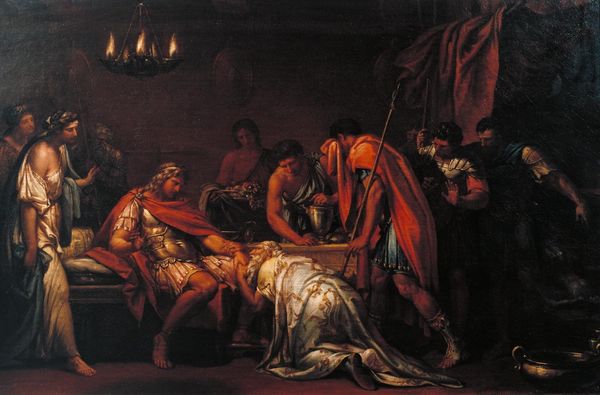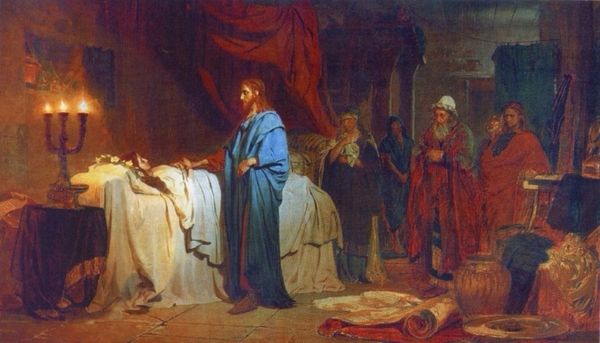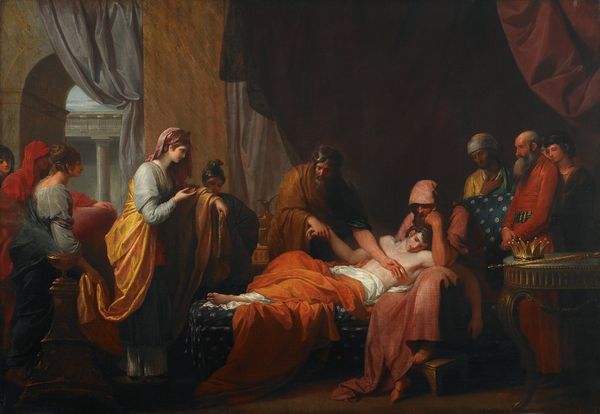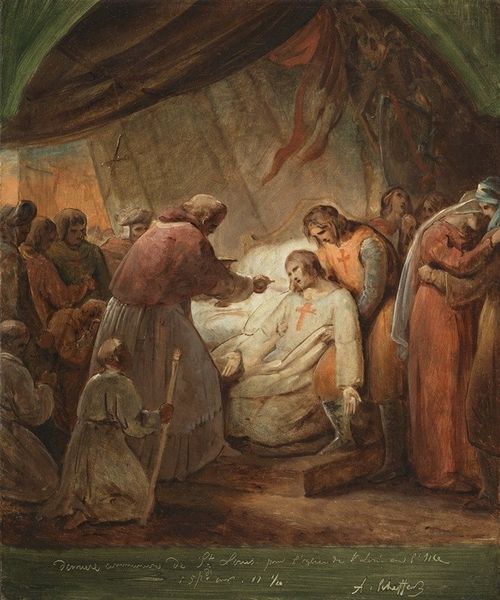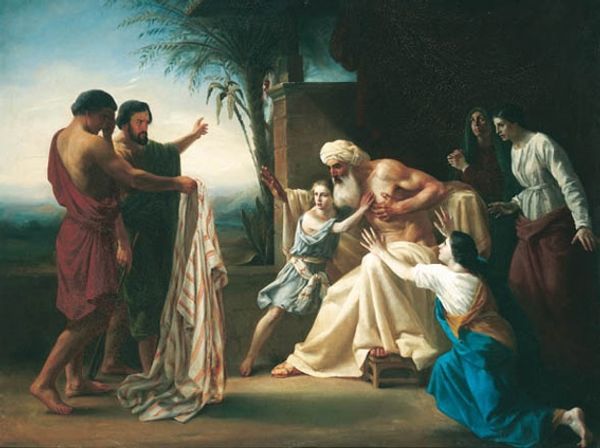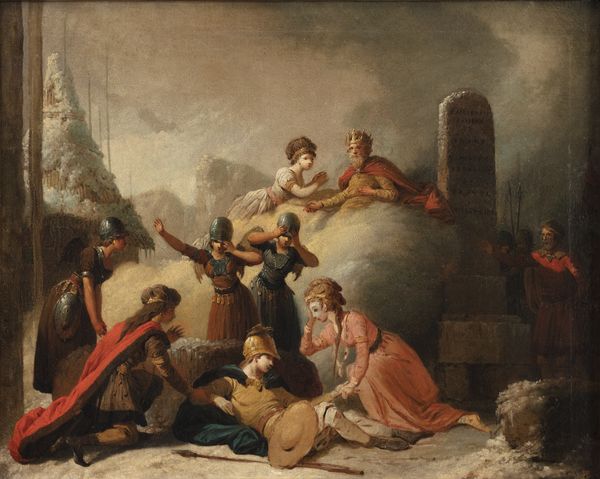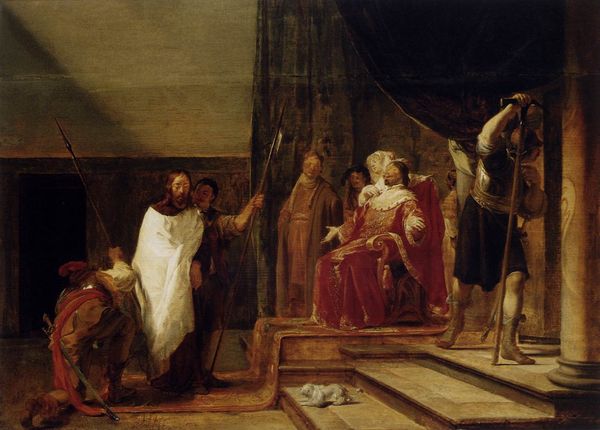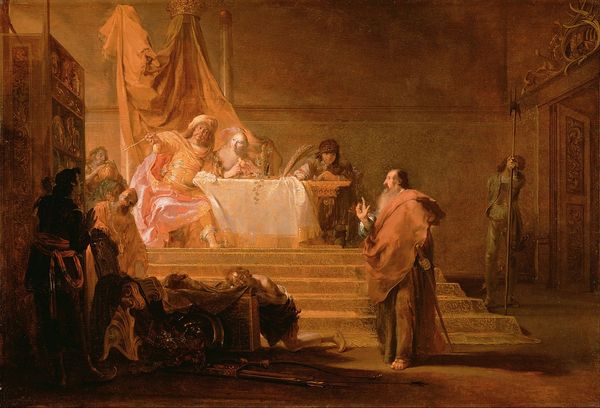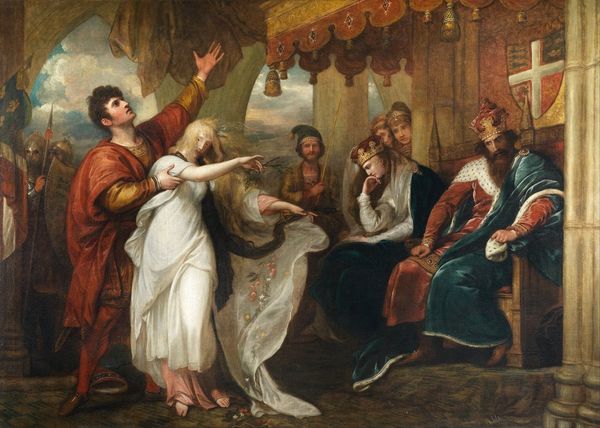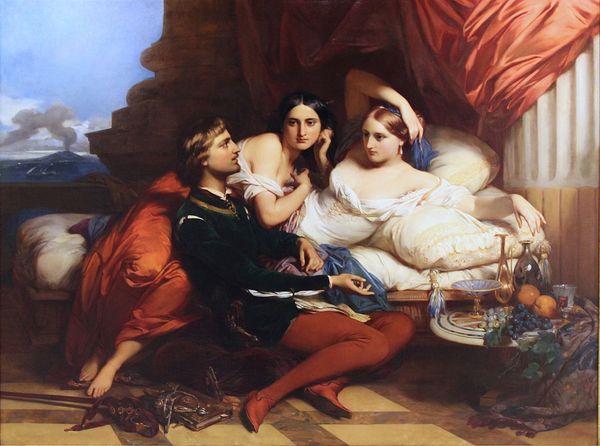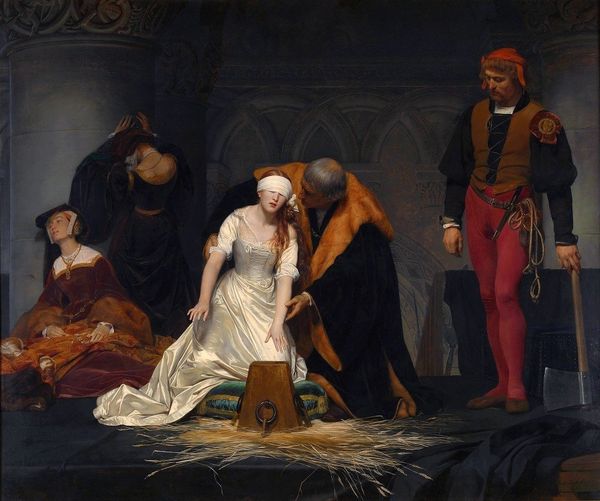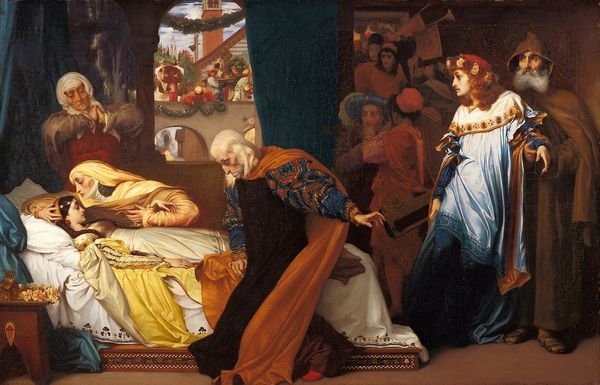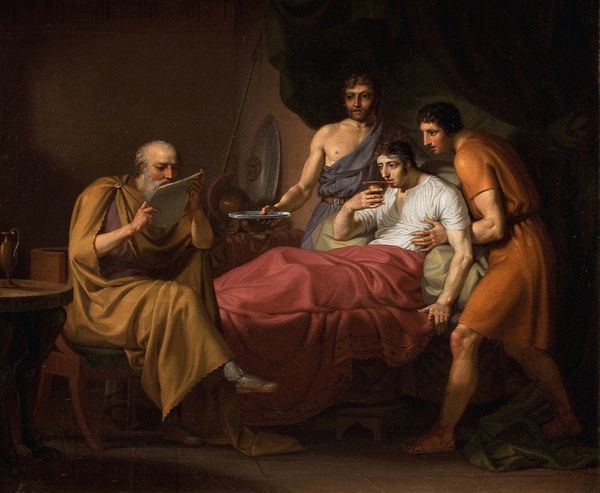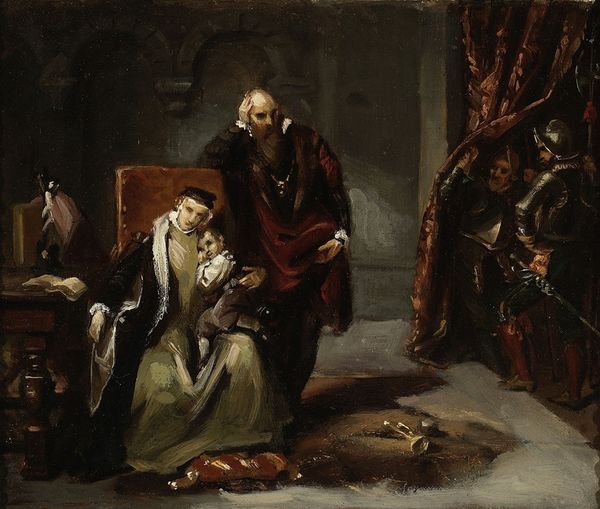
painting, oil-paint
#
narrative-art
#
painting
#
oil-paint
#
figuration
#
oil painting
#
romanticism
#
history-painting
Copyright: Public Domain: Artvee
Curator: Let's discuss Ary Scheffer’s painting, “The Death of Saint Louis,” created around 1817 using oil paint. Editor: The first thing that strikes me is the palpable sense of grief permeating the scene. Everyone seems consumed by sadness and despair. It’s quite theatrical. Curator: Scheffer painted this work relatively early in his career, after his classical training but before he found critical success in the mid-1830s. There's a very staged sensibility present, one that harkens back to earlier history painting, particularly the emphasis on moral virtue. We can read in this work the aspirations to create grand public art that exemplified French society's self-perception. Editor: Right, Saint Louis as a model of Christian piety and righteous rule—it's definitely laying it on thick! It is interesting to think about who the ideal spectator is meant to be, considering what a fraught figure the monarch was for a post-Revolutionary French society. It’s curious to consider the choice of romanticism for what is a somewhat stuffy and clearly propaganda-driven statement. Curator: Absolutely, and that tension between Romantic style and the desire for social cohesion reflects much of the Bourbon Restoration period after the Napoleonic Era. Figures like Louis were mobilized for national projects. The historical accuracy is, of course, less important than what the artist wants Saint Louis to signify: duty, honor, religious faith… virtues idealized by the establishment at that moment. It reminds people to be nostalgic about a mythic past in hopes of making the present a little bit less unnerving. Editor: Yes, there's something so heavy-handed about it. I'm interested in what is excluded: for example, there are people of color surrounding the scene, but none occupy a place of nobility or recognition within the painting. Saint Louis’ crusades resulted in very real ramifications and historical disruption. To portray him as simply noble is incredibly selective, especially in light of our contemporary reckoning with colonialism. Curator: Precisely, those exclusions highlight the mechanisms by which a romantic vision of the past is shaped to support very specific social agendas in the present. Thanks for offering this perspective on how the artwork also serves specific narratives of national identity. Editor: It helps reveal how artistic interpretation inevitably reflects a society's values, or, in many cases, the values it wants to promote. It is good to think about this Romantic piece through this lens of contemporary critical assessment.
Comments
No comments
Be the first to comment and join the conversation on the ultimate creative platform.
